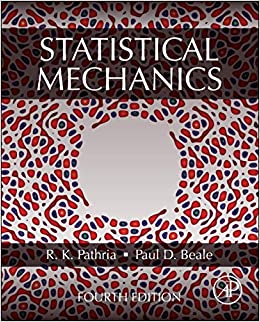Consider a binary alloy containing (N_{A}) atoms of type (A) and (N_{B}) atoms of type (B) so
Question:
Consider a binary alloy containing \(N_{A}\) atoms of type \(A\) and \(N_{B}\) atoms of type \(B\) so that the relative concentrations of the two components are \(x_{A}=N_{A} /\left(N_{A}+N_{B}\right) \leq \frac{1}{2}\) and \(x_{B}=\) \(N_{B} /\left(N_{A}+N_{B}\right) \geq \frac{1}{2}\). The degree of long-range order, \(X\), is such that
\[\begin{aligned}& {\left[\begin{array}{l}A \\a\end{array}\right]=\frac{1}{2} N x_{A}(1+X), \quad\left[\begin{array}{l}A \\b\end{array}\right]=\frac{1}{2} N x_{A}(1-X),} \\& {\left[\begin{array}{l}B \\a\end{array}\right]=\frac{1}{2} N\left(x_{B}-x_{A} X\right), \quad\left[\begin{array}{l}B \\b\end{array}\right]=\frac{1}{2} N\left(x_{B}+x_{A} X\right),}\end{aligned}\]
where \(N=N_{A}+N_{B}\), while the symbol \(\left[\begin{array}{l}A \\ a\end{array}\right]\) denotes the number of atoms of type \(A\) occupying sites of the sublattice \(a\), and so on. In the Bragg-Williams approximation, the number of nearest-neighbor pairs of different kinds can be written down straightaway; for instance,
\[\left[\begin{array}{l}A A \\a b\end{array}\right]=\frac{1}{2} q N \cdot x_{A}(1+X) \cdot x_{A}(1-X)\]
and so on. The configurational energy of the lattice then follows from equation (12.4.9). In the same approximation, the entropy of the lattice is given by \(S=k \ln W\), where
\[W=\frac{\left(\frac{1}{2} N\right) !}{\left[\begin{array}{l}A \\a\end{array}\right] !\left[\begin{array}{l}B \\a\end{array}\right] !} \cdot \frac{\left(\frac{1}{2} N\right) !}{\left[\begin{array}{l}A \\b\end{array}\right] !\left[\begin{array}{l}B \\b\end{array}\right] !}\]
Minimizing the free energy of the lattice, show that the equilibrium value of \(X\) is determined by the equation
\[\frac{X}{x_{B}+x_{A} X^{2}}=\tanh \left(\frac{2 q x_{A} \varepsilon}{k T} X\right) ; \quad \varepsilon=\frac{1}{2}\left(\varepsilon_{11}+\varepsilon_{22}\right)-\varepsilon_{12}>0\]
Note that, in the special case of equal concentrations \(\left(x_{A}=x_{B}=\frac{1}{2}\right.\) ), this equation assumes the more familiar form
\[X=\tanh \left(\frac{q \varepsilon}{2 k T} X\right)\]
Further, show that the transition temperature of the system is given by
\[T_{C}=4 x_{A}\left(1-x_{A}\right) T_{c}^{0}\]
where \(T_{c}^{0}(=q \varepsilon / 2 k)\) is the transition temperature in the case of equal concentrations.
[Note: In the Kirkwood approximation (see Kubo (1965), Problem 5.19), \(T_{c}^{0}\) turns out to be \((\varepsilon / k)\{1-\sqrt{ }[1-(4 / q)]\}^{-1}\), which may be written as \((q \varepsilon / 2 k)(1-1 / q+\cdots)\). To this order, the Bethe approximation also yields the same result.]
Step by Step Answer:






